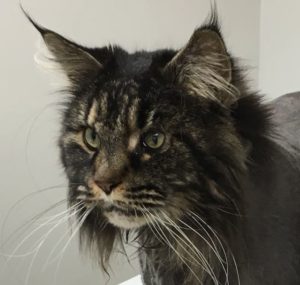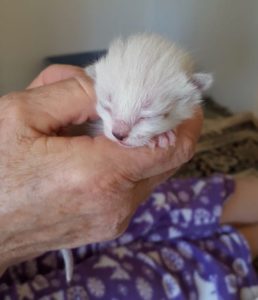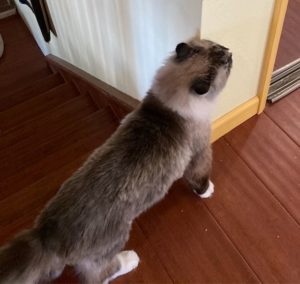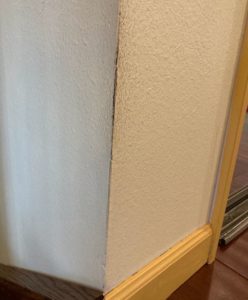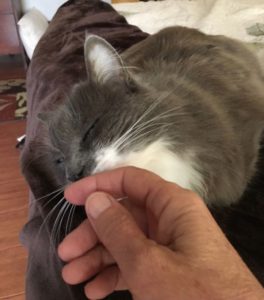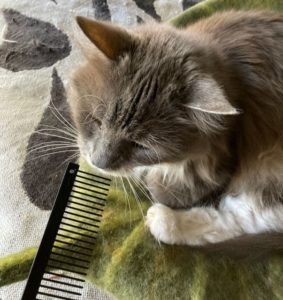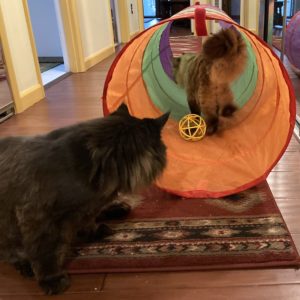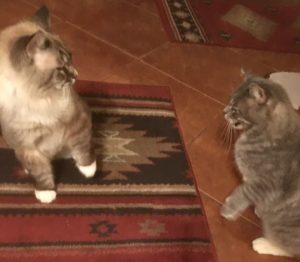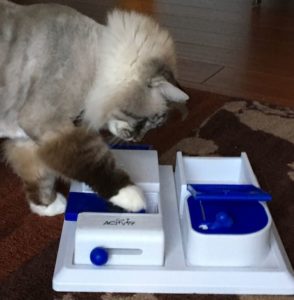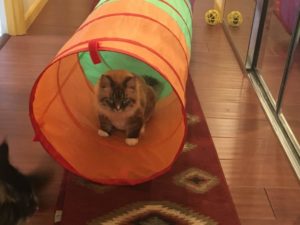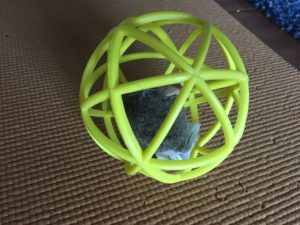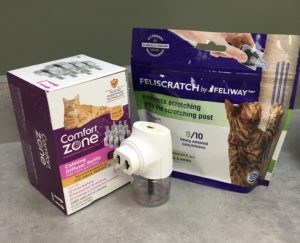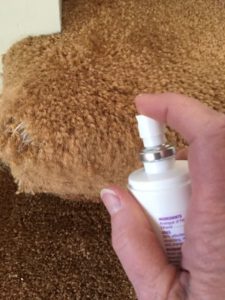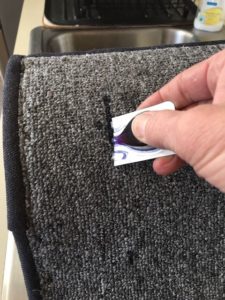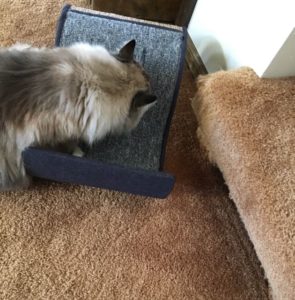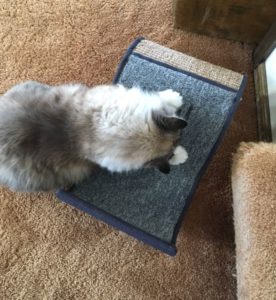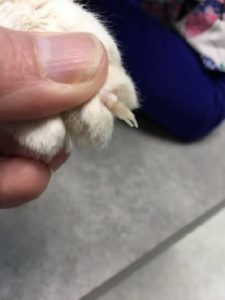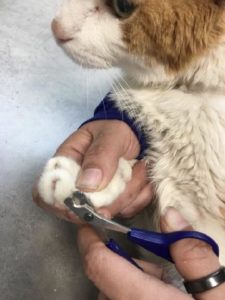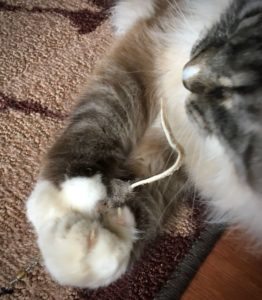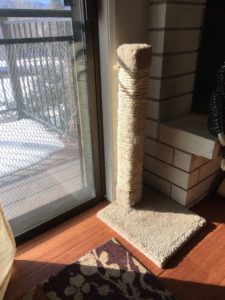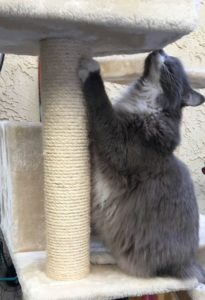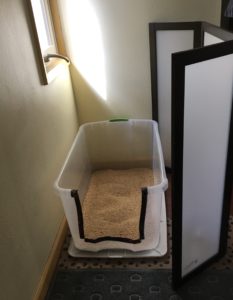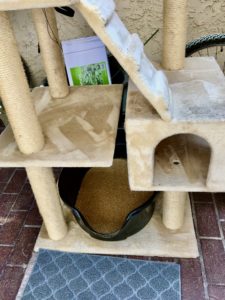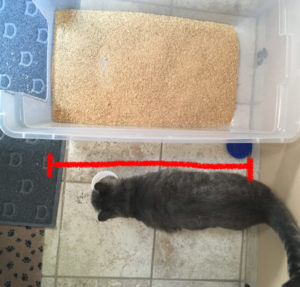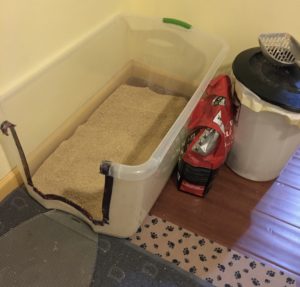Socialization in Cats – How Much is Enough?
Socialization in cats continues until they are 3-4 years old. However, they learn best when they are younger, ideally at 2-7 weeks of age.
How much socialization does a cat need?
Early Adoption…
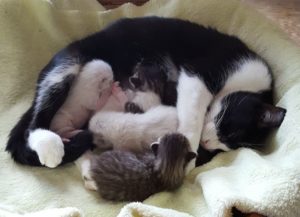
A kitten’s instruction in the language of Cat begins with his mother, aunts, and litter mates in the cat colony. Once weaned, he continues his studies with other juveniles and adults in the colony. When we adopt a kitten at 8 weeks or so, we interrupt socialization in cats.
If the kitten joins a home with friendly, well-socialized cats, she will be able to learn the nuances of cat social behavior. She should thrive and prosper.
Adoption into a household of where the cats are not socialized or where our kitten is an only cat may result in a confused and fearful kitten.
Orphan Kittens…

These are kittens where the mother cat is absent due to death or abandoning her kittens. Kindly human volunteers will undertake the raising of these kittens by hand, bottle feeding them, cleaning them, weaning them, providing play and social opportunity.
Without interaction with other cats, an orphan kitten will grow up like a “feral child” and may never be able to respond to social cues from other cats. Aggression towards humans is common among hand-reared kittens.
Tarzan, a fictional character from the Edgar Rice Burroughs novels, is a human child raised by apes after the deaths of his parents when he is an infant. He miraculously learns to speak and briefly joins society as a young adult.
Accounts of “feral children “are not science fiction like Tarzan. These children are often fighting and competing for food with the animals they join. The outcome of these cases depends on when (at what age) the children are abandoned to survive on their own and when they are brought back to society. Many of these feral children may not ever be able to speak and socialize normally with other people
- Keep hand reared kittens with their litter mates for socialization. The kittens can learn from each – if one kitten bites another, he will get bitten back. He will learn boundaries this way.
- If you are planning on an early adoption (kitten is less than 6 months old), consider adopting two kittens, preferably members of the same litter or kittens of a similar age.
- It can be risky to introduce small kittens (less than 16 weeks) to adult cats. Adult cats who have no experience of kittens will not know how to deal with them.
If you opt to introduce kittens to older cats, SUPERVISE AT ALL TIMES. Make sure your older cat is vaccinated for upper respiratory diseases and feline leukemia (if he goes outdoors). Gradual introduction is still recommended. A pair of kittens may still be your best bet in this situation and give you time to introduce all the cats at their own pace.
Not enough socialization…
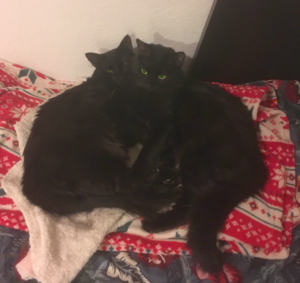
After the euthanasia of their male cat, owners of a female cat decided to adopt a new cat. They were smitten by two 10 month old male cats they found at a rescue for dogs. The two cats were litter mates and had been at the rescue since birth.
During several months of keeping the young cats separate from the older female cat, gradual introductions, pheromone therapy and time-sharing, the larger of the two young cats repeatedly attacked the female cat.
What happened?
- The young cats were not able to read the social cues (body language, olfactory cues) of the older cat. Their time at the dog rescue did not include socialization with cats other than their litter mates.
- The larger male kitten was fascinated with the older cat but also fearful of her. He attacked what scared him.
A Happy Ending
The “aggressive” cat has since been re-homed as single cat to another household. He is affectionate to his human family and doing well. The remaining male cat has started to bond with the older female.

